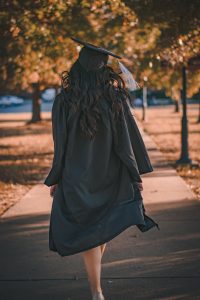Physical education, often abbreviated as P.E., is swiftly gaining recognition in school curricula across the globe. The increased prevalence of childhood obesity and sedentary lifestyles, accompanied by a rise in related health issues, underscores the crucial role of physical education in schools. P.E. provides a platform for students to engage in physical activities, promoting fitness, agility, and strength.
Beyond physical benefits, it fosters teamwork, discipline, and leadership skills. Moreover, it instills a habit of exercise and the knowledge of maintaining a healthy lifestyle among children from a young age, benefits that they carry into adulthood. Therefore, the role of a gym teacher becomes vital in this context, molding young minds to understand the importance of physical health.
This article explores the fulfilling and dynamic career path of a gym teacher, a professional who effortlessly combines their passion for fitness and education. As the importance of physical education in schools continues to rise, so does the demand for dedicated and passionate gym teachers. They guide students in fitness and sports activities, infuse them with a love for active living, and teach them the imperative values of teamwork, discipline, and leadership.
- The Role of a Gym Teacher
- The Intersection of Fitness and Education
- Educational and Certification Requirements
- Gaining Practical Experience
- Researching State-Specific Licensure Requirements
- Completing Physical Education Teacher Preparation Programs
- Meeting Licensure Exam Requirements
- Applying for Teaching Licensure
- Developing Innovative Physical Education Curricula
- Fostering Healthy Habits and Lifelong Fitness
- Navigating the Challenges of Gym Teaching
- Conclusion
The Role of a Gym Teacher
Gym teachers, also known as physical education teachers, have diverse responsibilities that contribute significantly to students’ health and well-being. Beyond the apparent role of leading sports and fitness activities, they are also responsible for crafting varied, engaging lesson plans tailored to meet all students’ fitness levels and needs. They oversee the safety of students during these activities, ensuring that the equipment used is in good condition and that the students are using it correctly to avoid injuries.
Positive and Encouraging Environment
Moreover, gym teachers play an essential role in creating a positive and encouraging environment for physical activity. They help students build confidence in their athletic abilities and foster a love for fitness that can lead to lifelong healthy habits. They also educate students about the principles of physical fitness, proper nutrition, and the benefits of regular exercise. This knowledge is essential for students to maintain physical health beyond school.
Serve as Mentors
Additionally, gym teachers often serve as mentors, providing emotional support and guidance. They motivate students to set realistic fitness goals, instill discipline, and teach them the importance of perseverance and resilience, skills that are beneficial both on and off the field. Through their role, gym teachers have a profound and lasting impact on students’ physical health, well-being, and overall personal development.
Skills and Qualities for Success as a Gym Teacher
To thrive as a gym teacher, one needs to possess unique skills and qualities that enable success in this dual role of educator and fitness promoter.
Passion for Physical Fitness and Health Education
A gym teacher should have a genuine passion for physical fitness and a deep understanding of health education. They should be able to demonstrate proper exercise techniques and provide clear instructions to students.
Excellent Communication and Interpersonal Skills
Excellent communication and interpersonal skills are crucial for effectively conveying fitness principles and techniques to students. They should be able to connect with students of different age groups and fitness levels, fostering a supportive and inclusive environment.
Patience and Adaptability
Patience and adaptability are vital as students learn at different paces and have varying levels of physical ability. Gym teachers must be able to adapt their teaching methods to cater to these individual needs.
Leadership and Motivational Skills
As leaders, gym teachers should have motivational skills to inspire students to participate in physical activities, set fitness goals, and maintain healthy habits. They should lead by example, modeling the active lifestyle they promote.
Knowledge of Safety Procedures
A strong knowledge of safety procedures is essential in ensuring a safe environment for physical activities. They should be able to quickly assess and handle any potential risks or injuries during these activities.
These skills and qualities, combined with a dedication to students’ health and fitness, are integral to the success of a gym teacher.
The Intersection of Fitness and Education
The role of a gym teacher is a unique fusion of the fields of fitness and education. This intersection is evident as gym teachers educate students about health and fitness principles while guiding them in physical activities. They convert traditional classroom knowledge into practical, physical lessons. For instance, a lesson on the circulatory system can be transformed into a tangible experience by relating it to a student’s heartbeat during exercise.
This integration of fitness and education also extends to teaching life skills. In the physical education setting, students learn about teamwork, leadership, and discipline through sports and games, valuable skills in the classroom and beyond.
Further, gym teachers utilize pedagogical methods to teach fitness concepts. This includes incorporating different learning styles in instruction, adapting to students’ abilities, and assessing students’ progress and understanding.
Ultimately, the gym teacher’s role perfectly embodies the intersection of fitness and education, using physical activities as a medium to educate, engage, and inspire students.
Educational and Certification Requirements
To become a gym teacher, one must meet several educational requirements. Typically, the journey begins with obtaining a bachelor’s degree in physical education, kinesiology, exercise science, or a related field. These programs often include coursework on exercise physiology, biomechanics, sports psychology, and health promotion.
Student Teaching Internship
In addition to classroom studies, prospective gym teachers often have to complete a student teaching internship under the supervision of a licensed teacher. This practical experience allows them to apply what they’ve learned in real-world settings, honing their teaching skills and gaining invaluable hands-on experience.
Bachelor’s Degree
Beyond the bachelor’s degree, most states in the U.S. also require gym teachers to hold a state-issued certification or license to work in public schools. The exact requirements for licensure vary by state but typically involve passing a series of exams that test both general teaching skills and knowledge in physical education.
Master’s Degree
Furthermore, many gym teachers pursue a master’s degree in physical education or a related field to enhance their knowledge and teaching skills. While not always a requirement for employment, a master’s degree can increase job opportunities and potential salary advancement.
Gaining Practical Experience
Practical experience plays a critical role in pursuing a career as a gym teacher. This hands-on involvement allows prospective gym teachers to translate theoretical knowledge into practical applications, understand the dynamics of a physical education class, and gain confidence in their teaching abilities.
Practical experience can be obtained through student teaching internships, voluntary coaching, or working as an assistant in physical education classes. These opportunities provide exposure to different aspects of the role, from classroom management and student engagement strategies to demonstrating fitness techniques and safety protocols.
Furthermore, practical experience can often help to make invaluable connections within the field and gain insights into the latest trends in physical education. Through this practical lens, gym teachers can truly grasp the full scope of their role, enabling them to foster a love for fitness among their students effectively.
Researching State-Specific Licensure Requirements
In the U.S., state-specific licensure requirements for gym teachers can vary significantly. It’s essential to research and understand these requirements, as compliance is mandatory to practice in a public school setting.
Bachelor’s Degree

Most states require gym teachers to hold a bachelor’s degree in physical education, kinesiology, or a related field. Some states might require a master’s degree or continuing education credits. For example, New York requires gym teachers to earn a master’s degree within five years of initial certification.
Certification Process
The certification process itself can also differ from state to state. While some states require you to pass a basic skills test (like the Praxis Core) and a subject-specific test (like the Praxis Physical Education Content Knowledge Test), others may require additional exams or assessments.
Continuing Education
Moreover, certain states might require gym teachers to regularly maintain their certification through continuing education courses. These courses help gym teachers stay updated on new teaching strategies, fitness trends, and advancements in educational psychology.
In addition, some states might have added requirements like First Aid and CPR certification. This is because gym teachers are responsible for ensuring the safety and well-being of students during physical activities.
It’s crucial to check with your state’s Department of Education or a trusted career advisor to understand the specific requirements in your state. Adhering to these requirements will ensure you’re fully qualified and prepared to start your journey as a gym teacher.
Completing Physical Education Teacher Preparation Programs
Accredited Physical Education Teacher Preparation Programs are designed to train aspiring gym teachers in the theoretical knowledge, practical skills, and professional dispositions required to teach physical education effectively. These programs are usually offered at the bachelor’s and master’s degree levels, with coursework covering a broad spectrum of topics such as human anatomy, exercise physiology, fitness testing, kinesiology, health and wellness promotion, sport psychology, motor learning, and adapted physical education.
Accreditation ensures that the program meets or exceeds quality standards set by the governing body, which in the United States is often the National Council for Accreditation of Teacher Education (NCATE) or the Council for the Accreditation of Educator Preparation (CAEP). These bodies evaluate the program’s curriculum, faculty, resources, and outcomes to ensure they align with the standards for effective teacher preparation.
In addition to classroom instruction, these programs also typically involve a significant amount of fieldwork, such as student teaching internships, observations, and practicum experiences, which allow students to gain real-world teaching experience under the guidance of experienced educators.
Upon completing an accredited teacher preparation program, students are usually eligible to apply for state licensure or certification. Graduates of these programs will have developed the foundational knowledge and skills needed to create engaging, inclusive, and effective physical education programs that promote lifelong physical activity and health.
Meeting Licensure Exam Requirements
Prospective candidates must typically pass licensure exams to become a licensed gym teacher. The exact exams vary by state but often include a basic skills test and a subject-specific test.
Basic Skills Test
The basic skills test, like the Praxis Core Academic Skills for Educators, assesses the applicant’s foundational knowledge and skills in reading, writing, and mathematics. This test ensures the prospective teacher possesses the necessary competencies to carry out general teaching responsibilities across various subjects.
Subject-Specific Test
The subject-specific test, like the Praxis Physical Education: Content Knowledge test, evaluates the candidate’s in-depth understanding of physical education. This examination covers a range of topics including, but not limited to, human growth and development, motor learning, fitness, and exercise science.
State-Specific Exams
Some states may require additional exams, which could be content-specific or pedagogy-focused. For instance, aspiring gym teachers may need to pass the California Subject Examinations for Teachers (CSET) Physical Education exams in California.
Continuing Education
Furthermore, to maintain their certification, gym teachers may be required to meet ongoing educational requirements, such as completing a certain number of hours of professional development or continuing education courses each certification cycle.
It’s important to note that licensure requirements vary significantly by state, so prospective gym teachers should consult their state’s Department of Education or a trusted career advisor to understand the exact examination requirements. Passing these licensure exams is a critical step towards becoming a certified gym teacher, demonstrating a comprehensive understanding of general teaching principles and specialized knowledge in physical education.
Applying for Teaching Licensure
Once you have completed your educational requirements and passed the necessary exams, the next step toward becoming a gym teacher is applying for your teaching license.
Application Form
The process begins with obtaining the application form from your state’s Department of Education website. This form typically asks for personal information, educational background, and details of your passed licensure exams.
Supporting Documents
You will need to submit various supporting documents along with the application form. These typically include official transcripts from your degree program, proof of your passed exams, and verification of your supervised teaching experience. Some states may also require fingerprints and a background check to ensure the safety of students.
Application Fee
There will likely be an application fee, which varies from state to state. This fee covers processing your application and issuing your teaching license.
Submission
After filling out the application form and gathering the required documents, you submit your application packet to the Department of Education in your state. The process for this will vary by state, but generally, you can submit by mail or online.
Processing Time
The application processing time can range from several weeks to a few months, depending on the state. During this time, your application and supporting documents will be reviewed to verify that you meet all the requirements for licensure.
License Issuance
Once your application is approved, you will receive your teaching license. This license certifies that you are equipped with the knowledge, skills, and experience necessary to teach physical education in public schools in your state.
Remember, each state has specific requirements, so it’s crucial to research and understand your state’s licensure process thoroughly. This careful preparation will help to ensure a smooth process as you take this exciting step towards becoming a gym teacher.
Developing Innovative Physical Education Curricula

The importance of creating innovative and inclusive physical education curricula cannot be overstated in a diverse and rapidly evolving society. A well-rounded curriculum seeks to cater to each student’s unique needs and abilities, acknowledging that each individual’s journey to fitness and health is personal and unique.
Innovation in physical education means moving beyond traditional sports and activities, incorporating a variety of non-traditional and culturally diverse activities that appeal to a broader student population. It may involve integrating technology, such as fitness apps or heart rate monitors, to engage students and enhance their learning experiences. It could also mean incorporating nutrition, mental health, and wellness activities to promote a holistic understanding of health.
On the other hand, inclusivity in physical education involves ensuring that all students, regardless of their physical abilities, gender, race, or cultural background, feel welcomed, accommodated, and encouraged to participate. This might involve adapting activities or equipment to meet the needs of students with physical disabilities or creating a safe and supportive environment for students who might feel excluded or uncomfortable in traditional physical education settings.
Developing an innovative and inclusive curriculum enhances students’ physical education experience and promotes respect for diversity, inclusivity, and a lifelong love for physical activity. Therefore, as future gym teachers, it is crucial to be prepared to design and implement curricula that foster learning, growth, and inclusivity.
Fostering Healthy Habits and Lifelong Fitness
One of their most significant roles as gym teachers is fostering healthy habits and promoting lifelong fitness among their students. This goal extends beyond the immediate objective of teaching specific sports skills or ensuring students pass fitness tests.
Promote Physical Activities
Healthy habits instilled at a young age often carry into adulthood, significantly influencing a person’s health and well-being. Thus, a gym teacher plays a crucial part in promoting physical activities that children can enjoy and participate in regularly, emphasizing that fitness can be fun and rewarding. These activities may range from traditional sports to outdoor adventures and dance classes, offering a wide variety to engage all students.
Importance of Nutrition
Moreover, gym teachers are also responsible for educating students about the importance of nutrition in maintaining health and enhancing physical performance. By integrating lessons on balanced diets, the role of hydration, and the dangers of unhealthy eating habits, gym teachers can prepare students with the knowledge they need to make informed decisions about their diet.
Monitor Progress
Finally, gym teachers can help students set realistic fitness goals, teach them to monitor their progress, and encourage them to persevere. By equipping students with self-monitoring, goal setting, and resilience, gym teachers can empower their students to take charge of their health and fitness, promoting a lifelong commitment to an active lifestyle.
Navigating the Challenges of Gym Teaching

Despite the rewarding nature of the profession, gym teachers often face a multitude of challenges. A common challenge is managing diverse fitness levels within a single class. The spectrum of student abilities can range widely, from natural athletes to those encountering structured physical activity for the first time. Crafting lessons that challenge advanced students while engaging and encouraging beginners requires creativity, flexibility, and a deep understanding of differentiated instruction strategies.
Similarly, accommodating diverse interests can be taxing. Not every student may resonate with traditional team sports often emphasized in physical education classes. Therefore, gym teachers must be innovative, incorporating various activities – such as dance, yoga, outdoor adventures, or individual sports – into their curriculum to cater to varied student interests. This diversity ensures every student finds an activity they enjoy and promotes inclusivity, enabling every student to experience the benefits of regular physical activity.
Moreover, gym teachers face the challenge of overcoming negative stereotypes or past negative experiences associated with physical education. They must work diligently to create a positive, safe, and encouraging environment that fosters a love for physical activity rather than instilling fear or discomfort.
These challenges, while substantial, can be successfully navigated with patience, creativity, and dedication. Moreover, overcoming these challenges can lead to a more inclusive, positive, and impactful physical education experience for all students, truly underlining the importance and value of the role of a gym teacher in a student’s educational journey.
Conclusion
Becoming a gym teacher is indeed a fulfilling journey, merging one’s passion for fitness and education to make a profound impact on students’ lives. It involves years of rigorous training, from earning a degree in physical education or a related field to passing licensure exams and mastering the art of creating inclusive and innovative curricula.
Beyond merely teaching sports skills, gym teachers are pivotal in promoting lifelong fitness, instilling healthy habits, and fostering a love for physical activity among their students. While the profession comes with its fair share of challenges, navigating them successfully not only strengthens your skills as an educator but also immensely enriches the lives of your students. In essence, the journey to becoming a gym teacher is a journey of transforming lives—one class at a time.
















